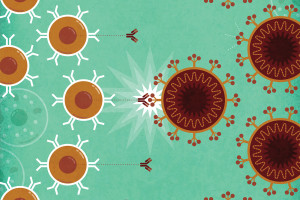Why Hundreds of Patients Are Dying After Lung Transplants
A new nationwide study led by Penn Medicine aims to identify the cause of common transplant surgery complications to improve transplant survival rates.

Jason Christie, chief of the division of Pulmonary, Allergy and Critical Care Medicine at Penn Medicine. / Courtesy
The first person to receive a lung transplant more than 50 years ago, survived for only 18 days after the surgery. Today, 80 percent of lung transplant recipients survive at least a year, though many face severe complications, some of which lead to death. More than 40 percent of lung transplant recipients die within five years of the procedure. Despite advances in the field, doctors are still struggling to understand the clinical and biological conditions that lead to lung transplant complications. A new nationwide study from Penn Medicine wants to find some answers.
“Lung transplant is still a relatively new field, and there are considerable gaps in our understanding of the mechanisms that impact lung function and long-term outcomes post-transplant,” Jason Christie, chief of the division of Pulmonary, Allergy and Critical Care Medicine at Penn Medicine, said in a statement.
Christie is the principal investigator of the new study that aims to improve long term lung transplant outcomes by examining data from more than 4,000 lung transplant recipients. The study is funded by a seven-year, $9.8 million grant from the National Institutes of Health (NIH).
As part of the study, researchers will use biosamples and data collected for routine clinical visits to perform long-term phenotyping on patients. The data will help researchers identify risk factors for chronic lung allograft dysfunction (CLAD), the leading cause of death among lung transplant recipients. Little is known about what causes CLAD or who is at risk for conditions related to CLAD. Christie hopes that’s something this study will help change.
“With such a large and diverse population of transplant recipients, this study presents an unparalleled opportunity to examine long-term outcomes of lung transplant recipients and advance our knowledge of the mechanisms that lead to post-transplant complications, organ rejection and functional outcomes,” Christie said.
Study investigators will also conduct exams at six-month intervals to measure lung function, frailty status and health-related quality of life to understand which patients seem to benefit most from lung transplants.
About 2,300 adults undergo lung transplants each year in the United States, including more than 100 via the Penn Lung Transplant program.
The study serves as an extension of research done by the Lung Transplant Outcomes Group (LTOG), an 11-center cohort founded by Christie in 2007 to investigate lung transplant complications. The LTOG has enrolled more than 3,400 participants in ongoing studies of lung transplants over the last 11 years.
“We hope our work will lead to improved clinical care and management of patients with advanced lung diseases as we comprehensively define the long term benefit of lung transplantation and generate new knowledge on CLAD mechanisms that may change treatment paradigms,” Christie said.


